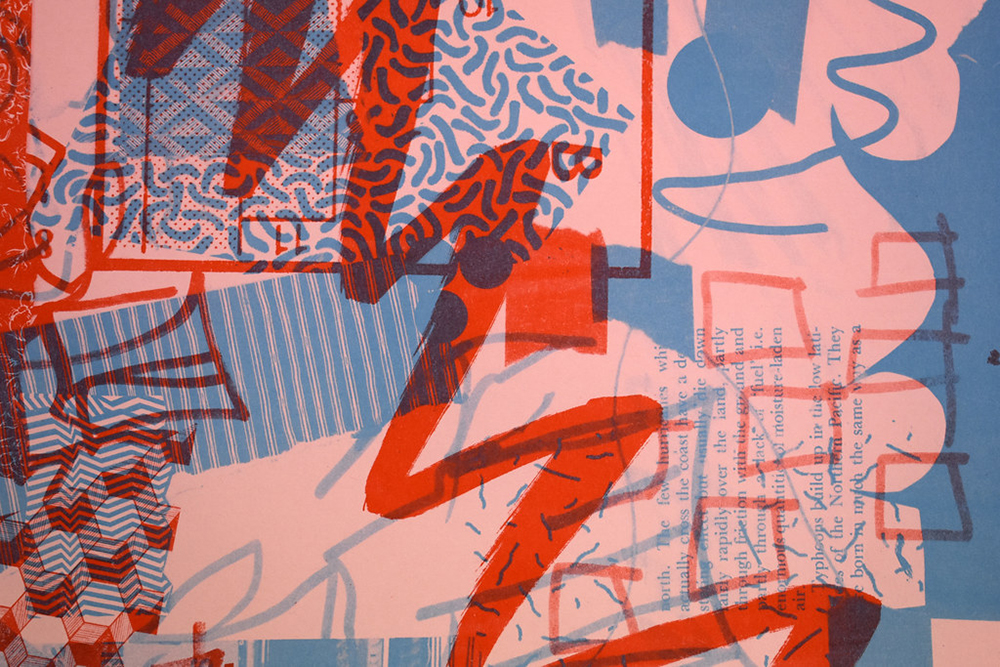The risograph printer, developed in Japan in 1986, has enjoyed a recent revival in the graphic arts and art book publishing communities. What sets this extraordinary little machine apart from the standard printer is that rather than printing an entire image at once with the standard CMYK (cyan, magenta, yellow, black) inks, the risograph prints one color at a time. Rather than this being an obstacle, it opens up a whole new world of printing possibilities for artists. With each color printed individually the paper runs through the printer multiple times, giving the artist more freedom with the way the colors mix and bleed into each other. Additionally, one can theoretically run a page through as many layers of color as they want, giving the final images a depth and vibrancy of color your standard CMYK printing process could only dream of.
This printer has revolutionized the design and visual art print communities, but it has also bled over into the publishing community—pun intended. The resurgence of this printing process has especially influenced the art book community in America and abroad. The printing process is relatively inexpensive and makes the process of printing multiples both easy and experimental. The process of the application of inks one by one enables each addition of a book to have slight variation. This effect, which would be frowned upon by large-scale printers, is in fact part of the charm of the risograph. Reproduction through replication is the ethos of printing, but when the works produced are short-run art publications, the slight variations that occur through the replication render each piece unique.
The revival of this printer has led to a wealth of new riso studios and printing services, and in the production of riso art books. Scattered across the country are bookstores where these copies are proudly displayed in vibrant rainbows spanning their selves. Printed Matter NYC, located in New York City’s affluent, gallery-filled Chelsea neighborhood, is an artist bookstore established in the 1970s. They carry hundreds of riso printed artist books. The price range is between one dollar and one hundred dollars, depending on who made it and why. The location of this store is notable in that it is sandwiched between fine art galleries. People come to this neighborhood to view and purchase fine art. The quality and unique distinction of the riso book, including the ones available at Printed Matter NYC, make them into a commodity that is not merely a book nor merely a work of art. It is firmly situated in between. This style of publishing with its multimodal quality has only risen in popularity.
While riso printing is not something that would prove useful for large print runs, the place in the market these riso books occupy is an important one for the small press branch of the publishing industry. The individuality of each copy coupled with the short print run practice gives each book a special, collectible quality. This drives consumers to keep up with the artist publishers that create books they like, following them on social media, signing up for newsletters, or visiting shops and fairs that carry their books regularly. There is a level of trust and loyalty between riso book printers and their customers. The books are not necessarily purchased merely for their content, but for the practice of making them. In this sense, they are part art, part book, and part something special that cannot be replaced. This is a new extension of the publishing industry that should be paid attention to.

